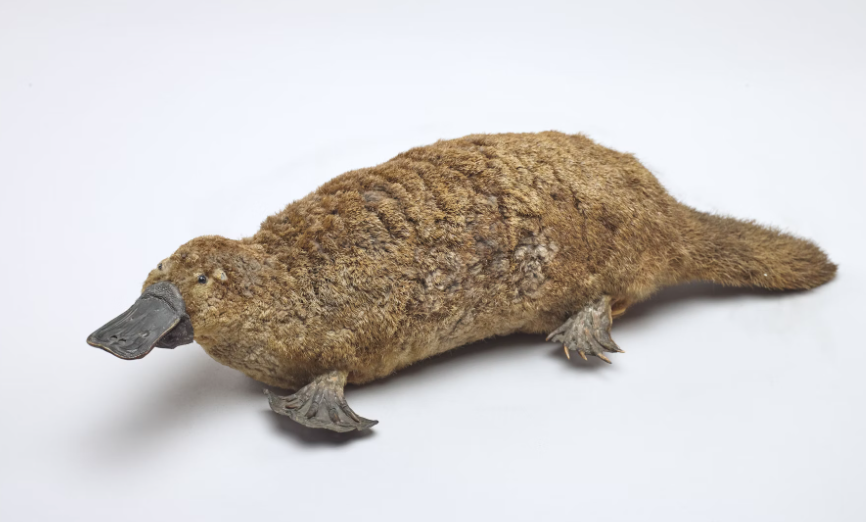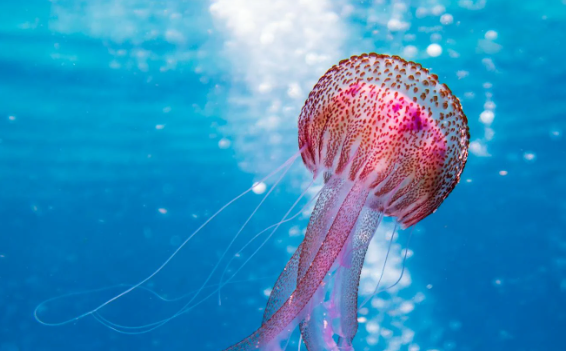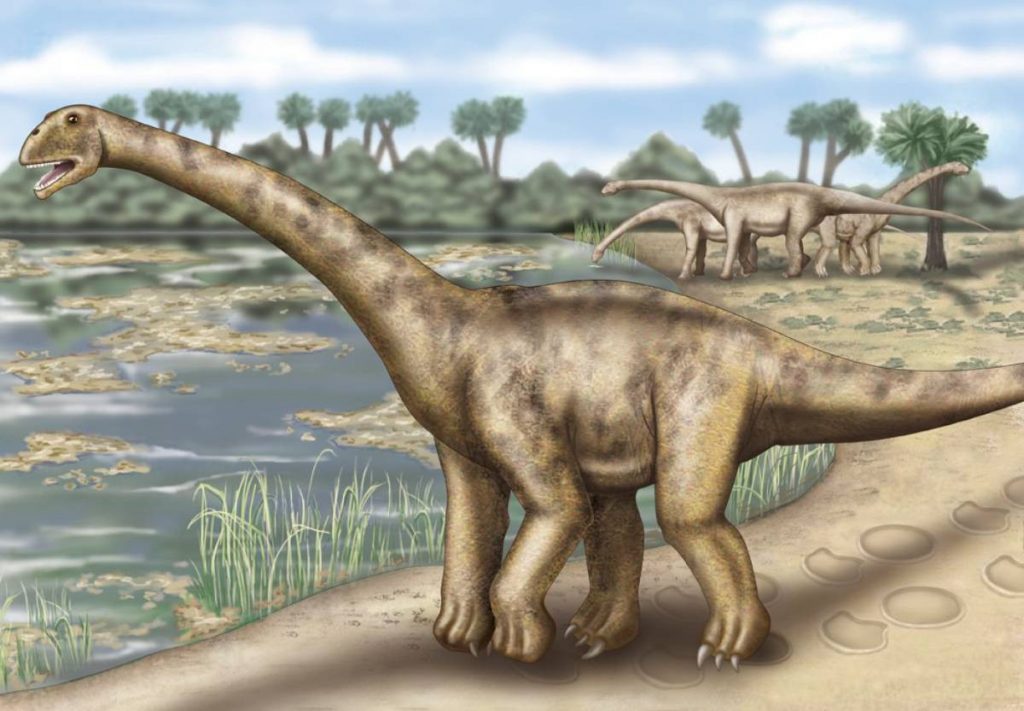Half Water Half Land: This Is the Platypus!

© Birmingham Museums Trust / Unsplash
Meet the fascinating platypus, a unique mammal found only in Australia and Tasmania. With its duck-like bill, webbed feet, and ability to lay eggs, the platypus is truly one of a kind. The platypus, with its unique appearance and blend of traits, has captivated scientists for centuries, standing out as a remarkable creature in the animal kingdom. But, how come it looks like that, and what are some characteristics that define this unique animal? We have got all the answers for you!
What Is a Platypus?
The platypus is a unique mammal that is native to Australia. It is mostly known for its unique appearance and characteristics. It has a duck-like bill, webbed feet, and a beaver-like tail. This makes it distinct from most other mammals. Platypuses are also one of the few mammals that lay eggs instead of giving birth to live young. They are semi-aquatic, spending much of their time in the water, and primarily feed on aquatic invertebrates. Platypuses are considered one of the most unusual and iconic animals in the world.
How Does a Platypus Behave in the Water?
Platypuses are adept underwater hunters, using their front webbed feet for paddling and their hind feet and tail for steering. They have specialized adaptations such as skin folds covering their eyes and ears, and watertight nostrils. This allows them to remain submerged while using their sensitive bills to locate food. They primarily feed on bottom-dwelling organisms like insects, larvae, shellfish, and worms, which they gather in their bills along with gravel and mud. They store this material in cheek pouches and then surface to mash and consume their meal since they lack teeth.
What About Land?
On land, platypuses exhibit a somewhat awkward gait, but their feet possess retractable webbing that exposes individual nails, enabling them to run. They utilize their nails and feet to construct dirt burrows at the water’s edge, where they rest and seek refuge. These burrows serve as shelter for platypuses during periods of rest, reproduction, and protection from predators. Despite their primarily aquatic lifestyle, platypuses are also adapted for limited terrestrial movement and habitat utilization.
How Do They Reproduce?
Platypus reproduction is highly distinctive, with only two mammals, including the echidna, laying eggs. Females lay one or two eggs, sealing themselves inside a burrow chamber for protection. The mother incubates the eggs by holding them between her body and tail. After about ten days, the eggs hatch, giving birth to tiny, helpless infants roughly the size of lima beans. The mother nurses her young for three to four months until they are capable of swimming independently.
8 Fun Facts About Platypus
Want to learn more about platypuses? These are some fun facts you should definitely know:
1. Some Platypus Are Venomous
Male platypuses possess venom glands located near their pelvises, connecting to hollow spurs on their hind legs. Young females also have these spurs but lose them within the first year of life. The size of the venom glands in adult males varies throughout the year, peaking during the breeding season when males use the venom to compete for mates. To inject the venom, a male wraps its legs around its victim and drives the spurs into the flesh.

The venom comprises a mixture of over a dozen proteins categorized into three major toxin classes. While not lethal, the venom causes swelling and intense pain, and it can disrupt wound healing and cell membrane function. Pain from a platypus sting in humans can be managed with nerve blockers, which inhibit specific nerve signals to the brain.
2. People Once Though They Weren’t Real
When platypuses were initially found in 1798, British scientists mistook them for a fabricated hoax, as they seemed to possess a combination of features from various animals, including webbed feet like a duck, a body resembling an otter, and a tail akin to a beaver. However, contrary to their skepticism, platypuses are indeed genuine creatures, showcasing a remarkable and unique existence in the animal kingdom.
3. They Can Glow in the Dark
Research has discovered that when exposed to ultraviolet (UV) light, platypuses glow a fluorescent glow, appearing greenish-blue. As of now, his phenomenon is still not fully understood. It’s unclear why platypuses possess this capability or what purpose it serves in their natural environment.

4. They Are More Similar to Sharks Than You Think
Similar to sharks, platypuses use electric impulses to detect prey and navigate in the murky waters of their habitats. They primarily feed on insect larvae, freshwater shrimps, worms, and yabbies, which they collect from the bottom and bring to the surface to consume. This unique hunting technique allows them to thrive in their aquatic environments.
5. Platypus Don’t Have Teeth
When platypuses transition to eating solid food, they lose their teeth and develop keratin discs, similar to hooves and claws, to aid in food grinding. During dives for food, they gather grit and gravel from the seabed. Upon surfacing, they commence “chewing” by grinding the gathered materials with their prey.
6. They Don’t Have a Stomach Either!
Unlike many mammals, their food bypasses a stomach with digestive enzymes or acids and goes directly to their intestines from their gullets. A study published in Genome Biology revealed that platypuses have several genes related to digestion and the stomach either deleted or deactivated. One theory suggests that this adaptation might be due to their diet’s high calcium carbonate content, which neutralizes stomach acid. Therefore, platypuses may not need stomach acid since it’s consistently neutralized by their food.
7. The Milk They Produce Is Antibacterial
Platypuses lack a sterile method to deliver milk, requiring additional protection against environmental bacteria. In 2010, researchers found that platypus milk contains antibacterial properties, potentially aiding in combating antibiotic resistance. A study in Structural Biology Communications revealed a unique ringlet-like protein structure in the milk, dubbed the “Shirley Temple protein” due to its resemblance to the actor’s curly locks. This distinctive structure suggests a unique therapeutic potential and may have played a crucial role in mammalian evolution, according to the researchers.

8. They Have 10 Sex Chromosomes
While most mammals have a single pair of sex chromosomes, platypuses have five pairs, with some Y chromosomes sharing genes with those found in birds. This peculiar genetic arrangement suggests a potential link between mammal and bird sex chromosome evolution. The platypus’s unique chromosome makeup could provide valuable insights into the shared evolutionary history of mammal and bird sex chromosomes.
Endangerment Status and Conservation
The platypus population is slowly declining, facing the looming threat of extinction. In the last three decades, their habitat has decreased by approximately 22%, equivalent to about 200,000 square kilometers, a size nearly three times that of Tasmania. With their status already endangered in South Australia and recently labeled as vulnerable in Victoria, there is a growing consensus that the platypus should receive national recognition as a threatened species.
The main threats to the platypus stem from human activities such as land-clearing, dam construction, drought, bushfires, and climate change, all of which contribute to the destruction of their critical habitat. Without sufficient safe habitat, platypuses face severe challenges to their survival.
What do you think of the Platypus? Do you find it cute and unique, or are you not a fan of its looks?
You might also want to read: Have You Ever Heard of a Pink Fairy Armadillo?



